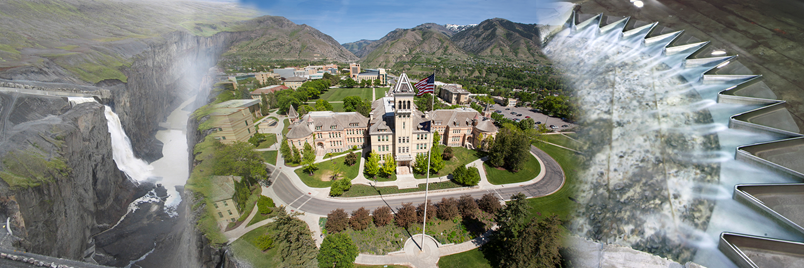Location
Utah State University, Logan, Utah, USA
Start Date
6-17-2012 12:00 AM
End Date
6-20-2012 12:00 AM
Description
ABSTRACT: This study focuses on documenting the influence of boulder spacing on flow patterns within an array of boulders in mountain streams. Boulder arrays modify the flow structures in their vicinity, which in turn regulate the depositional patterns. However, a critical literature review reveals that the effects of boulder spacing on flow have been overlooked. Herein, we hypothesize that the developing flow structures around boulders are controlled by the boulder spacing. The objective of this study is to map the surface flow structures around partially submerged boulders for two different boulder spacing scenarios: (1) λ/dc = 6 and (2) λ/dc = 10 (where λ denotes the spacing between the boulders and dc is the boulder diameter). For each scenario, the flow structures are mapped using an IR camera. The IR camera records the motion of ice-cube tracers, which is subsequently analyzed with the Large Scale Image Velocimetry (LSIV) software. The result is a surface velocity field produced by a sequence of successive frames. The flow experiments show that when λ/dc = 6, the shear layers emanating from the upstream boulders extend all the way to the downstream boulders, whereas when λ/dc = 10, the flow reattaches prior to reaching the downstream boulders.
Included in
The Effect of Boulder Spacing on Flow Patterns Around Boulders Under Partial Submergence
Utah State University, Logan, Utah, USA
ABSTRACT: This study focuses on documenting the influence of boulder spacing on flow patterns within an array of boulders in mountain streams. Boulder arrays modify the flow structures in their vicinity, which in turn regulate the depositional patterns. However, a critical literature review reveals that the effects of boulder spacing on flow have been overlooked. Herein, we hypothesize that the developing flow structures around boulders are controlled by the boulder spacing. The objective of this study is to map the surface flow structures around partially submerged boulders for two different boulder spacing scenarios: (1) λ/dc = 6 and (2) λ/dc = 10 (where λ denotes the spacing between the boulders and dc is the boulder diameter). For each scenario, the flow structures are mapped using an IR camera. The IR camera records the motion of ice-cube tracers, which is subsequently analyzed with the Large Scale Image Velocimetry (LSIV) software. The result is a surface velocity field produced by a sequence of successive frames. The flow experiments show that when λ/dc = 6, the shear layers emanating from the upstream boulders extend all the way to the downstream boulders, whereas when λ/dc = 10, the flow reattaches prior to reaching the downstream boulders.


